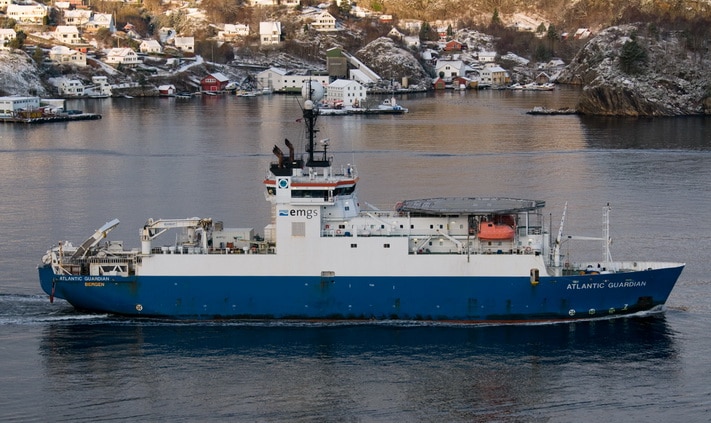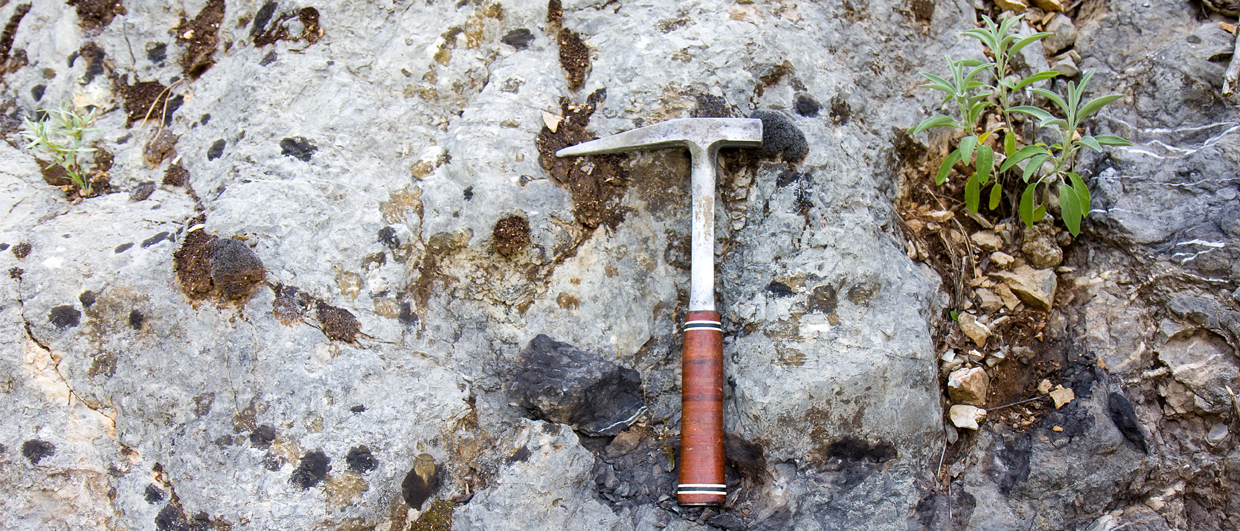Regional maps combining both vintage and modern interpretations are vital tools for both students and professionals.
What Do We Need?
Exploration geoscientists understand the need for regional comprehension to frame key risks before undertaking drilling obligations. Often the relevant material is scattered or buried in corporate archives so lack of background and time pressure forces the abbreviation of that critical first step, resulting in a well that fails to answer key questions. Major oil companies long depended on dedicated regional staff to address this concern and to their credit they have also released selected maps.
Figure 1: Potential field (gravity and magnetic) compilations. © EFSA.
Such releases not only provide valuable background for basin and prospect evaluation; they also offer a platform upon which academics can build while engaging and instructing their students. Ready access to fundamental field work and resulting geological mapping allows progress on formulating new questions and discovering new answers rather than simply retracing prior footsteps. When such material can be made available inexpensively and with audit trails within their metadata, research is facilitated at every level of funding and capability.
Where Does It Come From?
In 1989 geologist Ed Purdy published a set of litho-printed maps illustrating working hydrocarbon plays on the continent of Africa, drawing from his career with Esso (now ExxonMobil). More than a thousand copies of his Exploration Fabric of Africa set were distributed. In 2010, as a memorial to Ed, who died in 2009, the Exploration Fabric of Africa (EFA) project was initiated to reproduce his original maps as a multi-platform GIS and to chart discoveries and exploration results across Africa from 1990 onwards. EFA’s GIS version, with contributions from AAPG, has 44 sponsors (and counting) and contributions from the proceeds of licensing have been made to charities Africa Now and, latterly, MapAction. Sponsored project copies were installed at African universities as a public relations gesture by selected sponsors, benefitting students and researchers.
Figure 2: South America: basin outlines, after Ed Purdy, on sediment thickness backdrop. © EFSA.
With the partnership of two EFA supporters, Ed’s companion maps, Exploration Fabric of South America (EFSA), are now digital and an EFSA GIS project is largely compiled. Additional contributions from local expert Dr Carlos Maria Urien augment the Purdy work with that of a classic Southern Cone field geologist. As with the Africa project, the continental overview of EFSA’s geological relationships allows the inferring of structural setting and history and sediment provenance, and illustrates exploration trends. Basin-to-basin analogues can be compared, and even, given joint EFA-EFSA licences, cross-Atlantic conjugates can be examined. Consequently, students and explorationists will be able to harness the mapping expertise of Ed and Carlos while incorporating their own insights.
Some Examples From EFSA
EFSA includes gravity and magnetic compilations. Point data were carefully re-levelled from on- and offshore surveys (Figures 1a and 1b) and then gaps were filled from separate compilations of global gridded data (Figures 1c and 1d). The end product offers improved accuracy over the public domain global grids alone, permitting a better assessment of basement fabric through magnetics and structure through gravity. Each data type has also been inverted (with constraints) for depth to basement.
Figure 3: Neuquén Basin: basement control on discoveries. © EFSA.
Figure 2, derived by subtracting topography and bathymetry from basement depth, represents the total thickness of all sediments, thus highlighting basins; the thickest parts are shown in red. The combination of both gravity and magnetics data can image basement where seismic data is difficult to interpret, such as below volcanics or where thick dense carbonates have poor density contrast with the layers beneath. This map offers a key input to general basin modelling efforts. Note the brown basin outlines from Ed Purdy’s maps which agree well with the areas of maximum sediment thickness, except farther offshore where Purdy’s data was limited.
The series of maps in Figure 3 illustrates the importance of basement control on discoveries in the important Vaca Muerta unconventional play. Basement fabric appears to correlate with the productive natural fracture systems. The RTP-THD (total horizontal derivative of reduction to the pole) magnetic anomaly map in Figure 3a shows how basement fabric (black dashes) is identified through magnetic trends and how discoveries (triangles coloured by discovery age) seem to be clustering along these basement trends. The lower resolution EMAG2 image (Figure 3b) shows general agreement and the GI-AGC (isostatic residual anomaly automatic gain control) gravity data in Figure 3c also suggests similarities to the magnetic fabric. Figure 3d shows how topography correlates with basement structure, as illustrated by the change in drainage orientation north and south of the black dashed line, indicating that basement fabric has influenced the entire sedimentary column. These basement trends typically play a role in well productivity and merit further investigation.
Who Does It Benefit?
Time is of the essence. For academics, that means the duration of archival searches for prior knowledge in accessible formats. For exploration teams, there is the more burdensome effort of obtaining management, partner and regulatory body permissions for each element. Both needs are addressed in this project because both EFA and EFSA are built in GIS formats, offering map-based search capabilities. Data attribute tables support text-based searches by including references and citations, helping to form audit trails back to primary information. EFSA contains map elements which, like EFA, focus on basins and plays, not prospects, yet with sufficient clarity for use in meeting presentations and publications. EFSA and EFA content does not require Permissions for Use, other than acknowledgements, beyond the original licence, and student presentations can be created, largely or entirely, from EFA and EFSA material.
Acknowledgements
Lynx Information for digitising the Purdy maps. Grizzly Geosciences LLC for generating the potential field and sediment thickness images.
References:
http://www.efafrica.com/egpurdy.html





